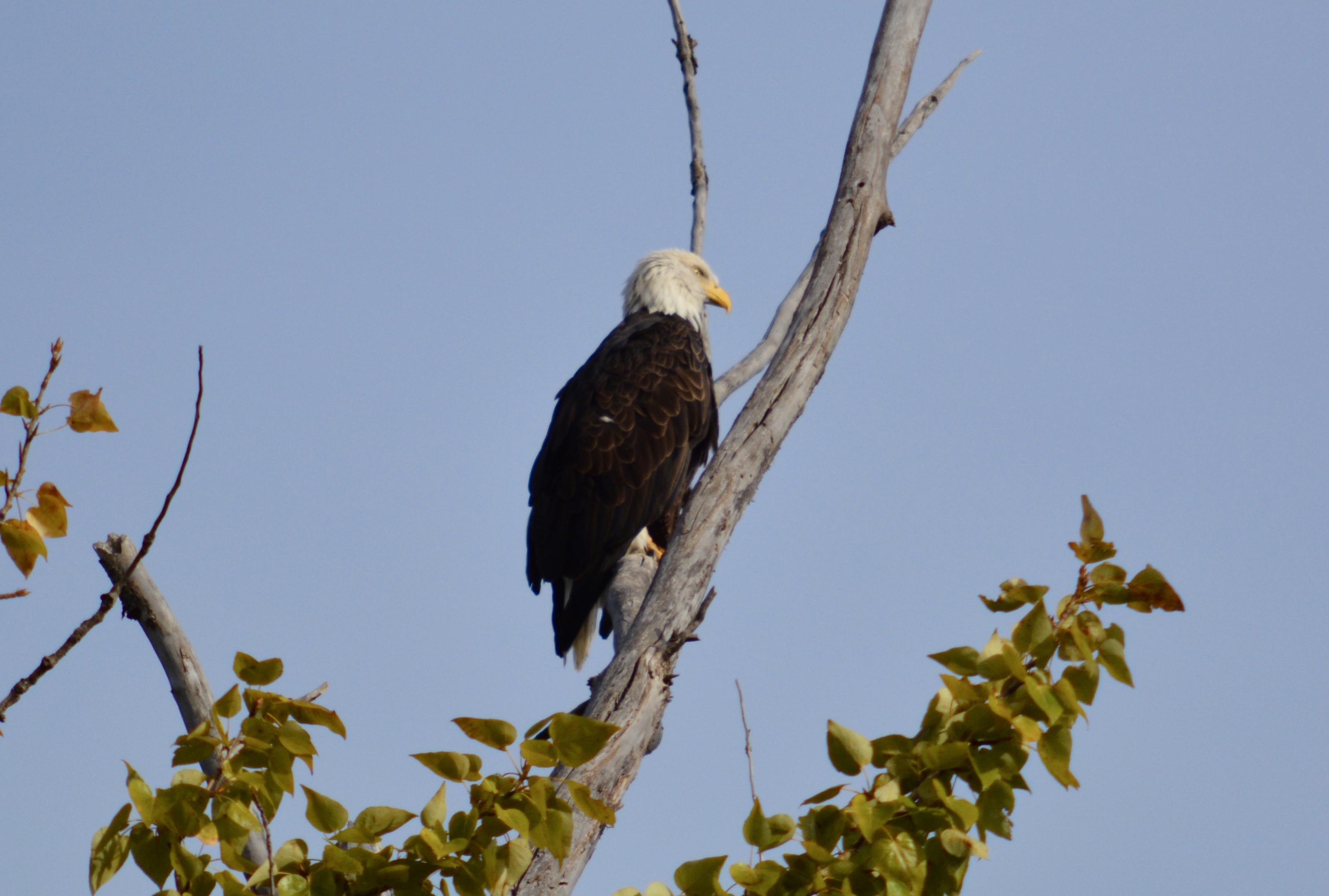
Bald eagles have returned on schedule to northern Idaho. The annual migration of these magnificent birds has begun and the number in our area is growing. The peak number will occur around Christmas. However, over 200 eagles are already handing out on the northern portion of Coeur d'Alene Lake according to the BLM official count!
Bald eagles can be found now near all lakes, rivers and streams in the area, but the largest concentrations are on Coeur d’Alene Lake and Lake Pend Oreille where food supplies are abundant for the birds.
The eagles are here to take advantage of abundant food opportunity, as mature kokanee salmon in Coeur d’Alene Lake and Lake Pend Oreille have completed their life cycle and are dying after spawning on submerged gravel. Kokanee were introduced to Coeur d’Alene Lake in 1937.
Spawned kokanee will be available on the two lakes well into January. Once the kokanee supply dwindles, the eagles will continue to the Klamath Basin of Oregon, to California, or into Southern Idaho and Utah.
The bald eagle is probably the most widely recognized symbol in the United States. It first appeared on a coin in 1776 and officially became our national symbol in 1782. Associated with strength and freedom, the bald eagle is unique to North America.
While most today admire and appreciate the bald eagle, it hasn’t always been so. From 1917 until 1952, over 100,000 bald eagles were shot in Alaska (prior to statehood) under the belief they were competitors with humans for salmon. Other of our actions such as development in critical habitats and pesticide use inadvertently had negative effects upon eagles. By 1970, there were only 1500 breeding pairs remaining.
The Bald Eagle Protection Act of 1940 prohibited killing of eagles and first protected the species’ habitat. In 1978, the Endangered Species Act listed bald eagles as “endangered” in 43 states and “threatened” in 5 states providing further protection. Reduced direct killing of eagles and the banning of certain pesticides have enabled eagles to exhibit dramatic recovery. Bald eagles were down-listed to “threatened” in 1995.
The bald eagle has a wingspan up to seven feet. Males weigh 8-10 pounds; females are larger at 10-14 pounds. Their white heads and chocolate brown/black bodies of adult bald eagles make it easy to recognize them instantly. Young birds have a brown head until maturity at age 4-5. Many immature bald eagles are mistaken for golden eagles.
Fish, dead or alive, are the preferred fare. Waterfowl, small mammals, winter or road killed deer are also utilized when available.
As with all living things; food, water, shelter and space are the essential elements of the habitat of an eagle. If any one of these is missing or unavailable, eagles will not be present. When areas north of us freeze making fish unavailable, the eagles head our way. Large trees are used for perching sites for foraging and resting.
Bald Eagle nests are among the largest in the world. A pair of eagles, mated for life, will add material to their nest annually. Nests can reach up to 8 feet across and 10 feet deep.
Mature eagles normally lay 2 eggs, sometimes three, rarely four. Eggs are laid in late February or early March and hatch following 35 days of incubation by both male and female adults. One successfully fledged bird per nest per year is the norm, because one nestling will often out-compete another for food and the weaker will not survive. However, on occasion more than one bird successfully leaves the nest and takes flight.
To observe eagles on Coeur d’Alene Lake, travel to Higgins Point or Mineral Ridge on Wolf Lodge Bay. Higgins point is probably the safest place to view from, as there are few pullouts and numerous blind corners on the Mineral Ridge side of the bay.
To avoid disturbing the birds, use binoculars or spotting scopes so you may view details without the need to be close. Vehicles disturb eagles less than walking people do, so parking safely off the road and viewing with binoculars is a good method. Watch the bird’s body language. If you are too close, an eagle will appear uneasy. Remain quiet and move slowly. It is illegal and unsafe to stop on a public roadway, so please use turnouts or parking lots to view eagles.
The daily life of an eagle in Wolf Lodge includes a dawn flight from a nightly roost over a mile away. Feeding activity begins upon arrival at the lake and continues throughout the early morning. Eagles will locate a fish from the air or a perch, glide over the water, and grab the fish with sharp talons. Returning to a feeding perch in a tree, the eagle tears pieces off with its beak to eat the fish. Feeding slows at mid-day, then resumes late afternoon before the flight back to the roost.
Eagle numbers will peak between Christmas and New Year’s. The Bureau of Land Management, US Forest Service, Idaho Department of Fish and Game and the Audubon Society join together to sponsor “Eagle Watch Week”. Events take place at the Mineral Ridge Boat ramp in Wolf Lodge Bay, and at the Mineral Ridge trail head in Beauty Bay. Every day from December 27-31, personnel will be on hand with spotting scopes, mounted specimens, educational materials and information about eagles.
Bring your thermos full of hot chocolate and make a day of viewing a magnificent bird and national symbol...a sight that few in the country have an opportunity to view at such a close range.
